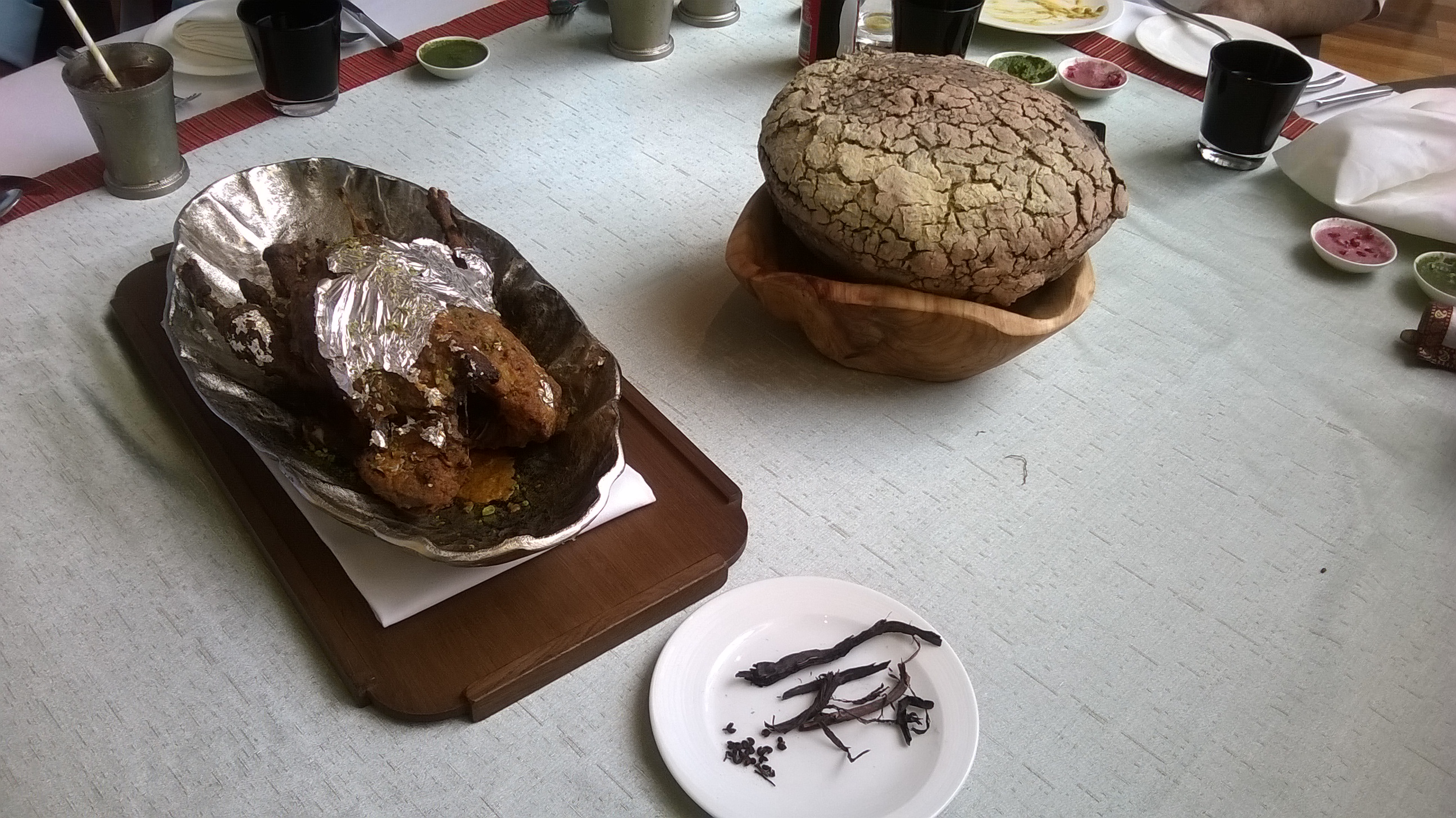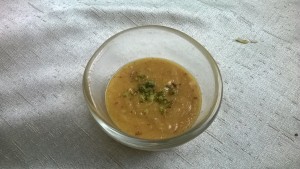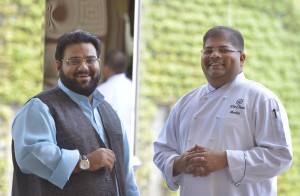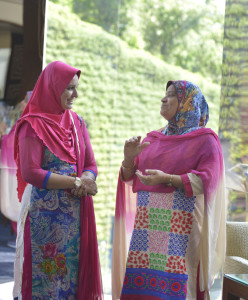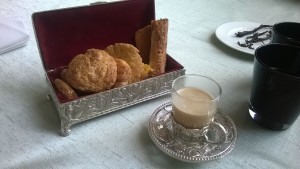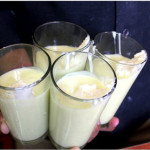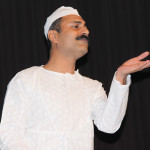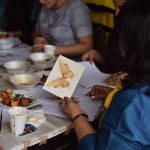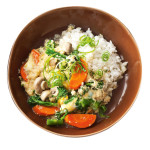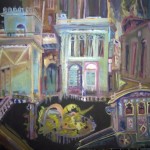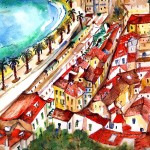Gosht ka halwa, anyone?
At the end of a hearty meal, when a small bowl of halwa was placed in front of me, I very gently said, “You know, I’m not very fond of dal halwa.” I was told equally gently, “Try it and tell us the ingredients.” I hesitantly took a small spoonful and said, “Oh this is not dal, this is besan.” Everyone else at the table also nodded and said, “Yeah tastes like besan.” We were all almost halfway through the small portion of the halwa when the hosts told us, “It’s not dal nor besan. It’s gosht. Gosht ka halwa.” All our spoons stopped halfway to our mouths with something akin to confusion, surprise and horror writ large on our faces.
Mutton, that too sweet! Unthinkable! We didn’t know whether we should finish the dessert or leave it, but it was so delicious that none of us could stop. We finished what was served to us and once again, seeking assurance, I turned to Osama Jalali next to me and asked him, “You aren’t fooling us, are you? This is ACTUALLY mutton and not besan or dal?” He smiled and said, “Of course it’s mutton – cooked in milk and sugar and dry fruits. The cardamom takes away the smell of mutton.”
The dessert was the finale of a leisurely lunch at The Oberoi, Gurgaon, which is holding a Lost Recipes of the Mughal Era festival at its all-day dining restaurant threesixtyone°. The festival that started on August 7 is on up to August 16.
Chef and well-known food critic Osama Jalali, his mother Nazish Jalali and his wife Nazia Khan along with the Executive Chef Ravitej Nath went on more than a three month quest to not only unearth the recipes but also find the spices used in those days.
“We would go to Khari Baoli in Old Delhi to find the spices. Some shopkeepers would dismiss us saying ‘nahin hai aage jao’. Some would understand and help us. But it was difficult because even we were learning about the spices. So it was difficult to ask the shopkeeper. One Sunday, we reached there early morning and walked into a shop where a young man was just about opening up. We walked in and began exploring. During a conversation, when he said one of his relatives worked at the Oberoi some time back, I quickly removed my shirt under which I was in my chef’s uniform which had the name of the hotel. Aur bas phir kya tha? He showed us just about everything,” said Ravitej laughing.
“I actually read all the three volumes of the Ain-i-Akbari to get a hang of things,” said Mallika Dasgupta, Manager Communications, The Oberoi Group.
We were shown a sample of some of the spices that they obtained. Naag kesar, sandalwood, marod phalli, khus ki jarh, patthar ke phool, kebabchini, paan ki jarh, paan ke tehniyan were just some of them. The chef asked us to put a bit of kebabchini in our mouth to taste and, believe you me, our tongues tingled for a long time after!
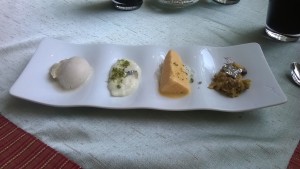
Dessert platter: Custard fruit ice cream, gulathi, mango kulfi and faluda and malida. Photo Credit: Seema Kumar
All of us at the chef’s table got a personalised menu card scroll with our name printed on top. Since the theme is lost recipes, the menu is also small since not many recipes could be found. But what is on the menu is mouthwatering.
We had luleh kebab, yakhni kebab, murgh pateeli kebab, patode and kebab e burghul for starters. Of these, the first three are non-vegetarian and the last two vegetarian. Luleh kebab is lamb kebabs rolled in a cardamom flavoured naan with cucumber and pomegranate and kebab e burghul is made of broken wheat (daliya), pepper, coriander and lentil.
The main course was a true royal meal. Parinde mein parinda (duck stuffed with chicken stuffed with quail stuffed with egg), amba qaliya (mutton cooked with kairi raw mangoes), kancha kofta (lamb kofta with a marble sized hollow in the middle), piston ke qeema (lamb mince with Afghani pistachios), murgh zameen doz (marinated chicken wrapped in dough, cooked in an earthen pot under the earth), arbi ka saalan (colocasia (arbi) cooked in yoghurt based gravy), angoori kofte (bottle gourd koftas made to resemble grapes and wrapped in silver leaves), mutanjan pulao (layered rice and chicken pulao with cloves, orange, cardamom, dates and figs) and motia pulao (rice with green peas and pearls of poached egg whites that resemble pearls). The egg white is filled in the small intestine of a lamb and tied at a distance of one inch before being boiled to form pearls.
By the end of this ‘royal repast’ I was asking Mallika to point me to some place where I could drift into a food coma! Just as we were thinking this was it, out came faluda with dry fruits (delicious) and gosht ka halwa. This was followed by a platter of malida (makki ki roti crushed with jaggery and nuts), kulfi-faluda, custard apple ice cream and gulathi. All this was rounded off with tea made of milk boiled many times over. I could barely manage a taste from the platter and a sip of the tea.
The food was delicious, made more so by the fact that each dish had its own distinct flavour thanks to the spices. The herbs and the spices were used only to add to the flavour, not to make the food spicy. While Osama and his wife unearthed the recipes, his mother (Ammi for everyone) recreated them, keeping the process and principle intact.
Interestingly, along with the festival menu they also have nahari and haleem as part of the menu to give people an idea about the difference in spices.
Sure enough, the difference is very distinct. And the repast, truly royal!

